One of the most bedevilling aspects of colonial and post-colonial African history and development that continues to impact on contemporary events has been the identification by colonials of specific ‘races’ and ‘tribes’ that were said to be linked to the slave status of the biblical Ham, son of Noah.
Together with these invented ethnicities often came the unexamined assumption that agriculture, livestock and cuisines of Africa were similarly inferior to those of Europe .
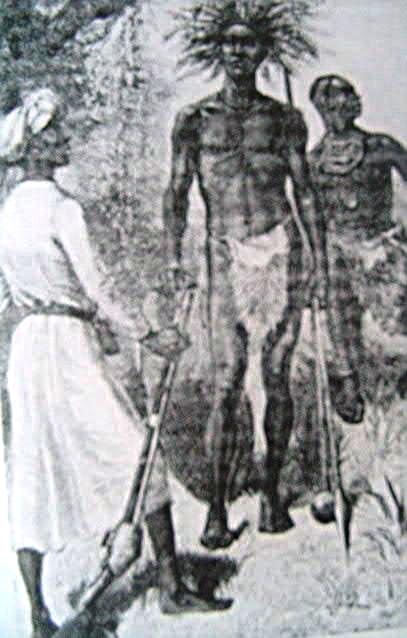
The tall, thin pastoralists of central Africa were identified by colonial explorers as descendants of the tribes of Ham. c. 1880. Source: unknown
I put the terms ‘race and ‘tribe’ in quotes, because many were invented categories that can be traced back even to classical geographers and their conceptions of the peopling of the African continent.
Background:
It is important to realize that, from medieval through colonial times, geographers, explorers and scholars turned to the bible for scientific information. Hence, the bible formed the substructure for imaginings of what existed in unknown regions of the world – specifically for this blog, empirical knowledge about the people and customs of Africa.
The Peopling of the world – Colonial and Medieval conceptions:
Based on the book of Genesis, the world was divided by medieval scholars into three, major (geographical-cum-racial) groups, each populated by one of the sons of Noah: Shem, Japheth, and Ham. This is depicted in the following 15th Century map:
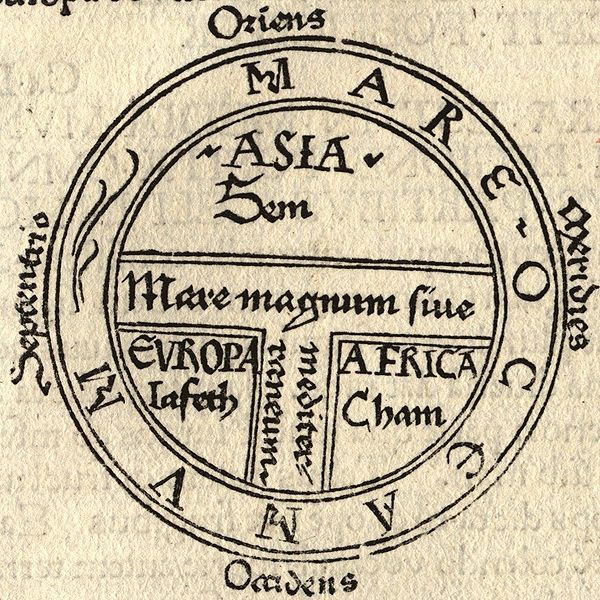
T & O map of Guntherus Ziner, 1472. Asia is at the top, Europe the bottom left, and Africa the bottom right. The Mediterranean is in the middle, the Red Sea to the right, and Caspian sea to the left of the T. The ocean surrounds. Source: Wikipedia
The descendants of the family of Shem were said to be the inhabitants of Asia, while Europe was peopled by the sons of Japheth and Africa by the sons of Ham.

the Hereford Mappa Mundi, c 1300, A classic T & O Map with Jerusalem at center, east toward top, Europe at bottom left and Africa on the right. Source: Wiki

Shem, Ham and Japheth, by James Jacques Joseph Tissot. 1902. Source: de Brunoff
As the following passage from Genesis explains, the descendants of Ham, through his son Canaan, were to be cursed for all time and were to be the ‘…slaves…to his brothers.’ It is upon this slim passage that the inhabitants of Africa became considered as an inferior race.
The sons of Noah who went forth from the ark were Shem, Ham, and Japheth. Ham was the father of Canaan.
These three were the sons of Noah; and from these the whole earth was peopled.
Noah was the first tiller of the soil. He planted a vineyard;
and he drank of the wine, and became drunk, and lay uncovered in his tent.
And Ham, the father of Canaan, saw the nakedness of his father, and told his two brothers outside.
Then Shem and Japheth took a garment, laid it upon both their shoulders, and walked backward and covered the nakedness of their father; their faces were turned away, and they did not see their father’s nakedness.
When Noah awoke from his wine and knew what his youngest son had done to him,
he said, “Cursed be Canaan; a slave of slaves shall he be to his brothers.”
He also said, “Blessed by the LORD my God be Shem; and let Canaan be his slave.”
God enlarge Japheth, and let him dwell in the tents of Shem; and let Canaan be his slave.”Source: Genesis 9:18-27
Although the color of Ham is not mentioned in the biblical passage, later interpretations – both Jewish and Christian – ascribed darkness or blackness to either his continence or his conscience, because of the evil act that he had perpetrated.
Interestingly, while the Old Testament is recognized by Islam, the interpretation of the inferiority of Ham’s descendants is rejected in Islamic sources. The 14th Century social historian ibn Khaldun ascribed skin color to environmental determinants – not to the family of Ham. Similarly, the earlier historian and essayist, al-Jahiz (8th. Century), stated that:
The Zanj [blacks, or Africans] say that God did not make them black in order to disfigure them; rather it is their environment that made them so. The best evidence of this is that there are black tribes among the Arabs, such as the Banu Sulaim bin Mansur, and that all the peoples settled in the Harra, besides the Banu Sulaim are black. .. White and black are the results of environment, the natural properties of water and soil, distance from the sun, and intensity of heat. There is no question of metamorphosis, or of punishment, disfigurement or favor meted out by Allah…
Source: Internet Medieval Sourcebook
Colonial Explorers and the Sons of Ham:
The idea that the populations of Africa, as the ‘sons of Ham’, were of an inferior and subservient race – as developed out of medieval Europe and based on biblical sources – continued to heavily influence European conceptions of the continent during 19th and 20th century explorations and subsequent colonizations. This ideology was used to justify not only to explain and justify colonial political actions, but was also used by missionaries in their endeavors to erase ‘savagery’ and introduce ‘sound Christian principles’. We have seen some of these attempts in this entry.
However, seeing the physiological differences between Africans residing in East Africa (those of a lighter color, taller and thinner) and the black tribes of the interior (darker and shorter), British and German colonials (initially) decided that the former were the Hamitic descendants of Ham that had intermarried locally – and as such were considered superior to the black, ‘fully Bantu tribes’ of the interior – who were seen as the least ‘civilized’.
In other words, the Hamitic tribes were considered ‘half way’ to being civilized, while the Bantu blacks were seen as stateless, lacking religion and morals, and totally lacking in advanced skills of agriculture, as defined by European powers.
The following passage by the British explorer Speke is the earliest 19th century source of which I am aware that proposes a Hamitic origin for the lighter-taller tribes of East and central Africa:
I propose to state my theory of the ethnology of that part of Africa inhabited by the people collectively styled Wahuma*– otherwise Gallas or Abyssinians. My theory is founded on the traditions of the several nations, as checked by my own observations of what I saw when passing through them.
It appears impossible to believe, judging from the physical appearance of the Wahuma, that they can be of any other race than the semi-Shem-Hamitic of Ethiopia. The traditions of the imperial government of Abyssinia go as far back as the scriptural age of King David, from whom the late reigning king of Abyssinia, Sahela Selassie, traced his descent…
*Wahuma – northern Uganda.
Source: John Hanning Speke – Journey of the Discovery of the Source of the Nile. 1863.
[NOTE: I am quoting solely from Speke’s journals in this blog, but his thoughts reflect those of virtually all explorers of the period – with the possible exception of Dr. Livingston.]
This interpretation of lighter and taller groups in central Africa as a kind of ‘half-bred’ Hamite was used to explain the existence of several of the indigenous kingdoms and city-states that explorers found in central Africa. Their forefathers, Speke proposes, had migrated out of Ethiopia and intermarried with Bantu tribes and this explains their more ‘advanced’ condition, especially with respect to state structures. Their more aquiline features and lighter skins were used as proof of Hamitic origin, in contrast to darker, shorter groups who were seen as 100% Bantu (non-Hamitic).
Speke continues:
…In these countries [the kingdoms and city-states that he found in east central Africa] the government is in the hands of foreigners, who had invaded and taken possession of them, leaving the agricultural aborigines to till the ground, whilst the junior members of the usurping clans herded cattle–just as in Abyssinia, or wherever the Abyssinians or Gallas have shown themselves. There a pastoral clan from the Asiatic side took the government of Abyssinia from its people and have ruled over them ever since, changing, by intermarriage with the Africans, the texture of their hair and colour to a certain extent, but still maintaining a high stamp of Asiatic feature, of which a market characteristic is a bridged instead of bridgeless nose….
Source: John Hanning Speke – Journey of the Discovery of the Source of the Nile. 1863.

An ‘ideal type’ hamitic-African, long thin nose and lighter skinned. Source: ‘Die Burundi…’, which is an account of the 1911 travels in Burundi of Hans Meyer. This was translated into French by Francoise Willman, with an extensive critique, footnotes and bibliography by Jean-Pierre Chrétien in 1983.
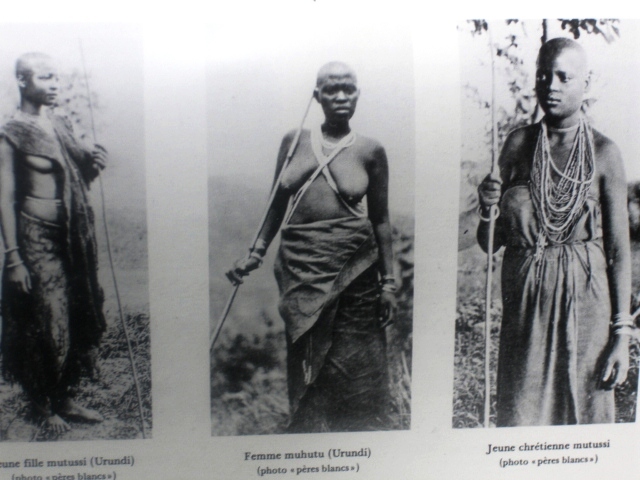
A blending of colonial political and missionizing goals in 19th.C. Burundi: The left = a Tutsi considered ‘part Hamiti’, the middle woman is said to be a ‘Hutu’, and the right woman to be a ‘Christian Tutsi.’ Source: ‘Die Burundi…’, which is an account of the travels of Osker Meyer 1911 travels in Burundi. This was translated into French by Francoise Willman with an extensive critiques, footnotes and bibliography by Jean-Pierre Chrétien in 1983.
The two pictures above were taken in Rwanda-Burundi and reflect goals first of German, then of Belgian colonizers: creating and empowering a ‘tribe’ of Tutsi rulers, while creating and disempowering a ‘tribe’ of Hutu agricultural peasants. But as we will see in future blogs, these were primarily inventions on the part of colonialists – based primarily on physical attributes – for it is increasingly considered that the two groups were not ethnically based, but were associated with political and livelihood pursuits.
Christian and Commercial goals:
The intertwined goals of commercial development and missionizing are clearly laid out by Speke, who advises prospective missionaries as to where they should direct their efforts (bold text, mine):
Of all places in Africa, by far the most inviting to missionary enterprise are the kingdoms of Karagué, Uganda, and Unyoro. They are extremely fertile and healthy, and the temperature is delightfully moderate. So abundant, indeed, are all provisions, and so prolific the soil, that a missionary establishment, however large, could support itself after the first year’s crop.
Being ruled by kings of the Abyssinian type, there is no doubt but that they have a latent Christianity in them. These kings are powerful enough to keep up their governments under numerous officers. They have expressed a wish to have their children educated; and I am sure the missionary need only go there to obtain all he desires on as secure a basis as he will find anywhere else in those parts of Africa which are not under the rule of Europeans.
If this was effected by the aid of an Egyptian force at Gondokoro [Modern Juba, in southern Sudan], together with an arrangement for putting the White Nile trade on a legitimate footing between that station and Unyoro [northern Uganda], the heathen would not only be blessed, but we should soon have a great and valuable commerce. Without protection, though, I would not advise anyone to go there.
Source: Speke-Journey of the Discovery of the Source of the Nile. 1863.
Summing up the conditions of Africans as seen by colonial explorers, Speke concludes – for the benefit of his government and of missionary-prone readers in England:
How the negro has lived so many ages without advancing, seems marvellous, when all the countries surrounding Africa are so forward in comparison; and judging from the progressive state of the world, one is led to suppose that the African must soon either step out from his darkness, or be superseded by a being superior to himself.
Could a government be formed for them like ours in India, they would be saved; but without it, I fear there is very little chance; for at present the African neither can help himself nor will he be helped about by others, because his country is in such a constant state of turmoil he has too much anxiety on hand looking out for his food to think of anything else.
As his fathers ever did, so does he. He works his wife, sells his children, enslaves all he can lay hands upon, and, unless when fighting for the property of others, contents himself with drinking, singing, and dancing like a baboon to drive dull care away. A few only make cotton cloth, or work in wood, iron, copper, or salt; their rule being to do as little as possible, and to store up nothing beyond the necessities of the next season, lest their chiefs or neighbours should covet and take it fr
Source: Speke – Journey of the Discovery of the Source of the Nile. 1863.
The agricultural connection:
The notion that African societies were inferior – and that some groups in Africa (such at ‘Hutu Tribes’) were still more inferior – continued to influence a number of areas of Western interactions with the continent, including those of food, agriculture and cuisine, such that improvements could, according to colonial efforts, best be found by introducing western-derived cultivars, livestock, food technologies, etc – an approach that continues to influence many research, development, and humanitarian efforts as will be discussed in later blogs.
Indeed, colonial imaginings of indigenous agricultural and cuisine were often as fanciful and lacking in understanding as those related to ethnicity:
Now, descending to the inferior order of creation, I shall commence with the domestic animals first, to show what the traveller may expect to find for his usual support. Cows, after leaving the low lands near the coast, are found to be plentiful everywhere, and to produce milk in small quantities, from which butter is made. Goats are common all over Africa; but sheep are not so plentiful, nor do they show such good breeding—being generally lanky, with long fat tails (1). Fowls, much like those in India, are abundant everywhere. A few Muscovy ducks are imported, also pigeons and cats. Dogs, like the Indian pariah, are very plentiful, only much smaller; and a few donkeys are found in certain localities…
… whilst all tropical plants will grow just as well in central equatorial Africa as they do in India, it surprises the traveller there should be any famines; yet such is too often the case, and the negro, with these bounties within his reach, is sometimes found eating dogs, cats, rats, porcupines, snakes, lizards, tortoises, locusts, and white ants, or is forced to seek the seeds of wild grasses, or to pluck wild herbs, fruits, and roots; whilst at the proper seasons they hunt the wild elephant, buffalo, giraffe, zebra, pigs, and antelopes; or, going out with their arrows, have battues against the guinea-fowls and small birds.
(1) fat-tailed sheep are now known to possess a remarkably useful adaptive capacity for arid zones, by which nutrients are stored in the tail [Diana’s note].
Source: Speke Journey of the Discovery of the Source of the Nile. 1863.
In future blogs I will take up the impact of these reports regarding the food, cuisine and agriculture in Africa. Also, I want to say more about the negative impact of Hamitic myths on future generations of inhabitants in central Africa – impacts that the colonials could never have imagined.
.
Related articles
- Genesis Chapter 9 (pofw.wordpress.com)
- Genesis Chapter 10 (pofw.wordpress.com)






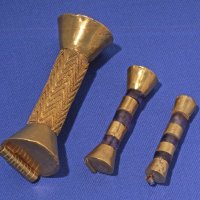
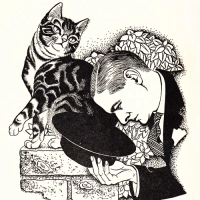

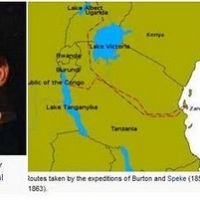


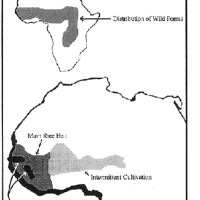














Pingback: 2013 in review | DIANABUJA'S BLOG: Africa, The Middle East, Agriculture, History and Culture
Thank you for this most interesting post. I have always been interested in Anthropology and love reading about different tribes although I find some difficult to understand. The information on this post is most helpful. Look forward to reading more.
LikeLiked by 1 person
While I’m not surprised, I was unaware that up through Colonial times scholars divided the world’s people in three groups, based on the sons of Noah. Obviously we today find that incredibly simplistic, but I suppose when you don’t have the understanding to accurately determine why physical differences exist, you look for anything you can find.
LikeLiked by 1 person
Pingback: A Taste of 2012 – Top Posts Favor Colonial Era; Food; Ancient Egypt | DIANABUJA'S BLOG: Africa, the Middle East, Agriculture, History & Culture
Pingback: Inventing Ethnicity; Imagining Agriculture: The ‘Tribes’ of Ham and the ‘Primitive’ Crops of Africa « Black Bourgeois' Blog
Pingback: Looking back at Syria: 19th Century Explorations | DIANABUJA'S BLOG
Pingback: Ethnic Psudo-histories of Central Africa – Tribes of Ham Again 2 « Dianabuja's Blog
Pingback: Click Here
I grew up in Africa and never saw anyone eat the animals described above. It is easy to judge others when you visit people with preconceived notions. Whites eat snails, frogs,earthworms, etc all of which are equally disgusting.
Then there is homesexuality, prostitution, swingers, zoophiles, etc. Humans have vices all over the globe. In Africa it is said “A baboon does not see it’s own (red) backside……it is always too busy laughing at the others’ backside that it can see.
Unlike my ancestors in Africa, I am learned enough to see the mess that London was even as Livingstone was enjoying travelling in Africa. London was a baterial city full of cholera, plague and spanish flu. Next time before you invent more stories about Africa, look at your own backsides. Those faithful African servants would have left David Livingstone near Lake Tanganyika where he died if they knew just what he thought of them.
Africa is still the White Man’s grave……Malaria and many vermines lie there in waiting for strangers.
LikeLiked by 1 person
Steph – I quite agree with you.
LikeLike
Pingback: Race from a local perspective: 19th and 14th Centuries « Dianabuja's Blog
Pingback: Most Popular Blog Pages – Why?! « Dianabuja's Blog
My family recently traced our ancestory to Cameroon. These articles have been very helpful, and full of information.
LikeLiked by 1 person
Kylisha –
I’m very happy about that – more to come, and also from East and Southern Africa! Diana.
LikeLiked by 1 person
Thanks, Maria and Perez. maria, I did pack quite a bit of information into the blog – too much, actually, and I’ll ‘unpack’ with other information – especially linked to agriculture and cuisine – in future blogs.
LikeLiked by 1 person
a lot of information here, diana…
LikeLiked by 1 person
interesting post !
LikeLiked by 1 person